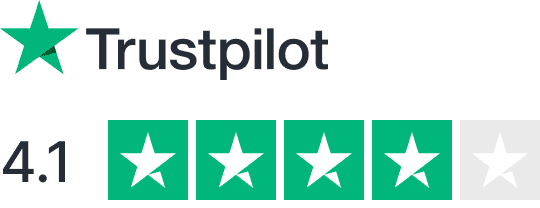Managing time zones with LATAM teams is easier than you think. Latin America’s proximity to the U.S. allows for significant work-hour overlaps, making real-time collaboration smoother than with other regions. Here’s how you can optimize your remote team collaboration:
- Leverage Overlapping Hours: Many LATAM countries share U.S. time zones, ensuring up to 100% alignment during business hours.
- Use the Right Tools: Platforms like Slack, Zoom, and World Time Buddy simplify scheduling and communication.
- Schedule Smartly: Focus on core overlap hours (e.g., 1–3 PM EST) and rotate meeting times to accommodate everyone.
- Plan for Differences: Account for daylight saving time, regional holidays, and cultural nuances when setting deadlines and meetings.
With proper scheduling, communication tools, and respect for time differences, you can boost team productivity and collaboration across borders.
Overcoming Communication and Collaboration Challenges: Tips for Working with Remote Tech Teams
Time Zones: LATAM and U.S. Overlap
Having overlapping time zones between LATAM and the U.S. makes remote team collaboration much smoother. With similar business hours, teams can work together more effectively. Many countries in Latin America operate in time zones that align closely with U.S. schedules, creating a natural fit for remote partnerships. The table below breaks down these alignments.
LATAM Time Zone Map
Latin America’s time zones are a great match for U.S. companies. For example, Mexico spans several time zones, from GMT‑8 to GMT‑5, covering both West and East Coast U.S. operations. Central American countries like Costa Rica, Guatemala, and Honduras share the U.S. Central Time Zone (GMT‑6). Meanwhile, Colombia, Peru, and Ecuador align with U.S. Eastern Time (GMT‑5).
Here’s a quick look at how these alignments work:
| U.S. Time Zone | LATAM Coverage | Overlap with U.S. Business Hours |
|---|---|---|
| Eastern (EST) | Colombia, Peru, Ecuador, Panama | 8 AM – 5 PM EST (100% overlap) |
| Central (CST) | Mexico, Costa Rica, Guatemala | 9 AM – 6 PM CST (100% overlap) |
| Pacific (PST) | Mexico (Baja California) | 8 AM – 5 PM PST (100% overlap) |
| Varies | Argentina, Brazil, Chile (GMT‑3) | About 2 hours ahead of Eastern and up to 5 hours ahead of Pacific |
Time Zone Impact on Teams
These overlapping time zones lead to better communication and faster response times. Studies show that for every hour of time difference between team members, the frequency of voice and video calls drops by 11%. When teams are in similar time zones, communication becomes quicker and more efficient. For example, Miami-based companies work seamlessly with teams in Colombia and Peru, while San Francisco businesses benefit from collaborating with Mexican teams in Mountain Time. This alignment is one reason why 87% of tech companies are looking into nearshore outsourcing.
Here are some tips for managing time zone differences effectively:
- Schedule Optimization: Teams in Argentina, Brazil, and Chile (GMT‑3) can focus on morning overlaps with U.S. teams to maximize productivity.
- Meeting Windows: Teams in Colombia and Peru, which share Eastern Time, allow for full-day collaboration.
- Response Times: Mexican teams in the Central Time Zone can respond promptly to both East and West Coast schedules.
Setting Up Team Communication
Managing communication across different time zones takes a thoughtful combination of tools and well-planned protocols.
Communication Tools Guide
Here’s a breakdown of tools that can help streamline team communication:
| Tool Type | Recommended Platform | Best Use Case | Key Feature |
|---|---|---|---|
| Instant Messaging | Slack | Quick updates, team chat | Channels, threads, integrations |
| Video Conferencing | Zoom, Microsoft Teams | Team meetings, presentations | Meeting recording, screen sharing |
| Asynchronous Video | Loom | Detailed explanations, tutorials | Video messages, screen recording |
| Project Management | Asana, Trello | Task tracking, deadlines | Timeline views, task assignments |
Slack has proven especially helpful for teams in LATAM, offering persistent chat rooms and integrations with tools like Google Drive, GitHub, and Dropbox.
But tools alone aren’t enough – setting up meetings at the right times is just as important for effective collaboration.
Meeting Schedule Setup
Scheduling meetings during overlapping work hours is key. A good window for teams across U.S. and LATAM time zones is 1:00–3:00 PM EST.
To make meetings more productive:
- Document Expectations: Clarify attendance requirements, recording policies, and action items.
- Scheduling Tools: Use When2Meet for team-wide meetings and Calendly for one-on-one sessions.
- Rotate Times: Change meeting times quarterly to spread out any inconvenience.
You can also introduce a buddy system, pairing team members in different time zones to share updates.
For clear and effective communication, keep these practices in mind:
- Always specify time zones for meetings.
- Share agendas at least 24 hours in advance.
- Record meetings for those unable to attend live.
- Use UTC offsets in messages to reduce confusion.
These steps help ensure everyone stays on the same page, no matter where they’re located.
sbb-itb-a3fbb4e
Work Schedule Management
Managing work schedules across time zones can be tricky, but having clear guidelines makes it easier. Latin America’s close alignment with U.S. time zones offers great opportunities for collaboration.
Finding Shared Work Hours
Take advantage of overlapping work hours to improve teamwork. Many Latin American countries share similar time zones with the U.S..
| U.S. Time Zone | LATAM Coverage | Overlap Window |
|---|---|---|
| Eastern (ET) | Panama, Colombia, Peru, Ecuador | 9:00 AM – 5:00 PM ET |
| Central (CT) | Mexico, Costa Rica, Guatemala | 9:00 AM – 4:00 PM CT |
| Mountain (MT) | Mexico (select regions) | 9:00 AM – 3:00 PM MT |
| Pacific (PT) | Mexico (Baja California) | 9:00 AM – 2:00 PM PT |
Once you identify these overlap windows, align team schedules to make the most of them.
Adjusting Work Hours
Adapting work hours can boost both productivity and morale. Here’s how:
- Core Hours: Set specific periods when all team members are available for meetings and collaboration. This ensures key tasks are handled together, while still allowing flexibility outside these hours.
- Flexible Scheduling: Offer work arrangements that fit individual preferences. This approach complements Latin American work habits and enhances efficiency.
- Regular Reviews: Revisit work schedules every quarter to make sure they’re still meeting team needs.
Synchronizing work hours is just the first step – setting smart deadlines is equally important.
Setting Time Zone-Smart Deadlines
Deadlines that consider time zone differences keep projects on track:
- Plan with UTC: Use Coordinated Universal Time (UTC) for all deadlines to avoid confusion.
- Add Buffer Time: Include a 24-hour cushion for critical deadlines to account for time zone variances.
Breaking larger tasks into smaller, manageable milestones ensures steady progress, reduces delays, and makes it easier to track progress while handing off work across teams.
Time Zone Management Tools
Working with distributed teams across different time zones can be tricky, but the right tools can make scheduling, project coordination, and meetings much smoother – especially when collaborating with LATAM teams.
Time Zone Calculators
Time zone calculators are a lifesaver for scheduling. World Time Buddy stands out with its simple, visual interface for comparing time zones. You can save frequently used locations and share time slots, making it perfect for coordinating with LATAM teams.
Google Calendar also comes in handy with built-in time zone features. It adjusts for daylight saving time and supports recurring meetings across regions, ensuring everyone stays on track.
| Tool | Key Features | Best For |
|---|---|---|
| World Time Buddy | Visual time comparison, shareable links | Quick time checks, meeting planning |
| Google Calendar | Automatic DST adjustment, multi-time zone view | Team calendars, recurring meetings |
| Spacetime.am | Team dashboard, local holiday tracking | Managing distributed teams |
For more than just scheduling, project management tools can help bridge time zone gaps effectively.
Project Management Tools
Modern platforms like Monday.com and ClickUp are highly rated for handling time zone differences. According to G2 reviews, both tools boast a 4.7/5.0 rating, with Monday.com having over 10,600 reviews and ClickUp over 9,400 reviews.
ClickUp is particularly useful for distributed teams. It automatically adjusts task deadlines based on time zones, lets you set custom work hours, and shows each team member’s local time.
If you’re looking for a budget-friendly option, Trello offers a solid free plan. For advanced automation features, Trello Premium costs $12.50 per user per month, making it an affordable choice for managing teams across time zones.
Meeting Scheduling Software
To ensure meetings are well-coordinated, meeting scheduling tools can complement your calendars and project platforms.
- Calendly: Automatically detects time zones and shows each participant’s local availability. Its seamless integration with popular calendar apps makes it ideal for LATAM team meetings.
- Microsoft Teams Scheduling Assistant: Designed for organizations using the Microsoft suite, this tool considers team members’ work hours to simplify scheduling.
Team Time Zone Best Practices
Managing time zones effectively is key to smooth collaboration with LATAM teams. Building on scheduling and communication strategies, these tips help improve coordination across different time zones.
Time Zone Respect Guidelines
A respectful approach to time zones starts with setting boundaries and clear expectations:
| Practice | How to Implement | Why It Matters |
|---|---|---|
| Core Hours | Set a 4-hour overlap window | Allows for real-time teamwork |
| Meeting Rotation | Alternate meeting times fairly | Shares the burden of timing |
| Response Times | Define urgency levels clearly | Protects personal time |
| Team Availability | Document local work hours | Respects regional schedules |
These steps ensure everyone’s time is valued, fostering a productive and balanced remote work environment.
Documentation Standards
Good documentation is critical when working across time zones. Research shows that well-structured documentation can improve developer productivity by about 50%. Here’s how to keep things organized:
- Create a Communication Charter: Outline how and when to use synchronous and asynchronous communication.
- Assign Content Ownership: Designate team members to maintain and update documentation.
- Set Version Control Standards: Keep clear revision histories for all documents.
Provide resources like guides, video tutorials, and searchable knowledge bases to make information accessible. Clear and organized records help LATAM teams integrate seamlessly into projects.
CareMinds LATAM Team Integration
CareMinds simplifies integrating LATAM teams by offering:
- HR and Administrative Support: A dedicated team handles admin tasks, freeing up developers to focus on their work.
- Flexible Engagement Options: A two-week trial lets you fine-tune workflows for time zone alignment.
- Rapid Scaling: Access a pool of over 1,000 vetted developers and 100+ recruiters, all aligned with your time zone.
Effective time zone management relies on building a culture of trust and flexibility. Focus on results instead of rigid working hours, and encourage regular feedback to improve collaboration across time zones.
Conclusion
Managing time zone differences with LATAM teams requires the right mix of tools, clear communication, and awareness of cultural nuances. As remote work continues to reshape global business, aligning time zones has become a key factor in ensuring smooth operations.
The growing prevalence of remote work in Latin America offers U.S. companies unique advantages. Hiring LATAM talent can reduce costs, boost productivity, and open doors to new markets. With the global outsourcing market projected to hit $40.16 billion by 2025, the potential for collaboration is immense.
Structured communication protocols play a crucial role in making these collaborations successful. Take companies like CareMinds, for example. They excel in managing time zone differences by providing fast talent matching and support services tailored to both U.S. and LATAM schedules. This approach helps teams work together efficiently and unlock new possibilities for growth.
With 32.6 million Americans expected to work remotely by 2025, adopting these strategies and using the right tools can help businesses tackle time zone challenges. By prioritizing clear communication, using effective technology, and respecting time zone differences, companies can build strong, productive teams that thrive in the ever-evolving remote work landscape.
















